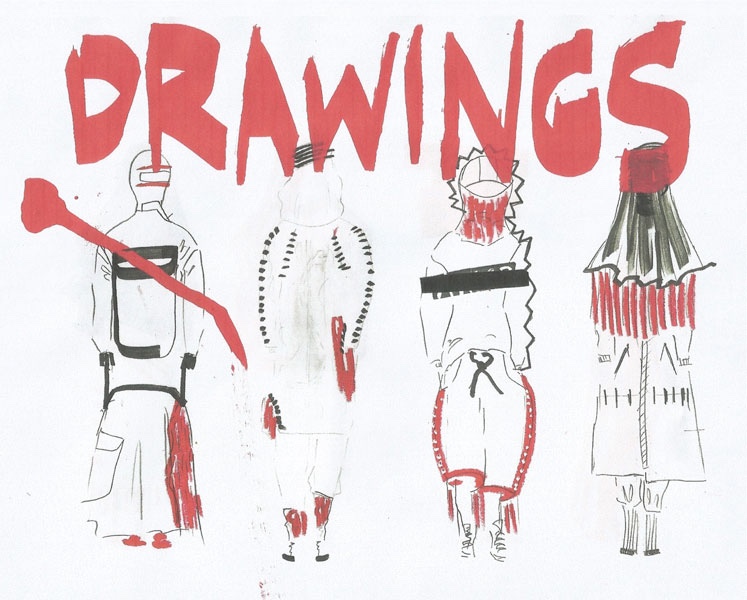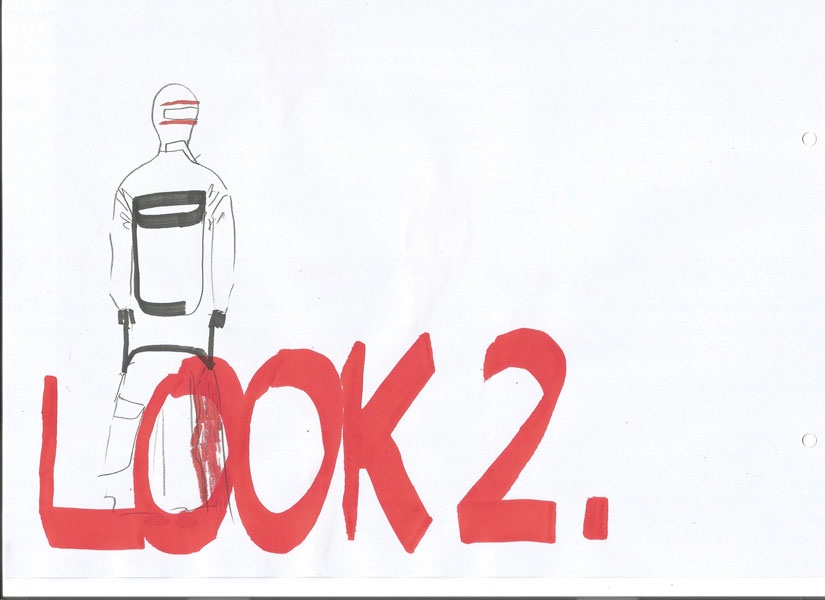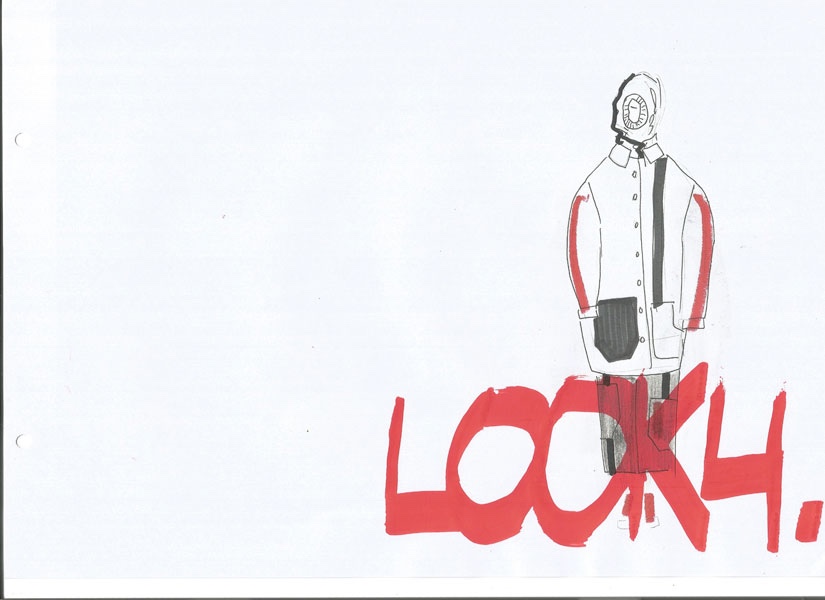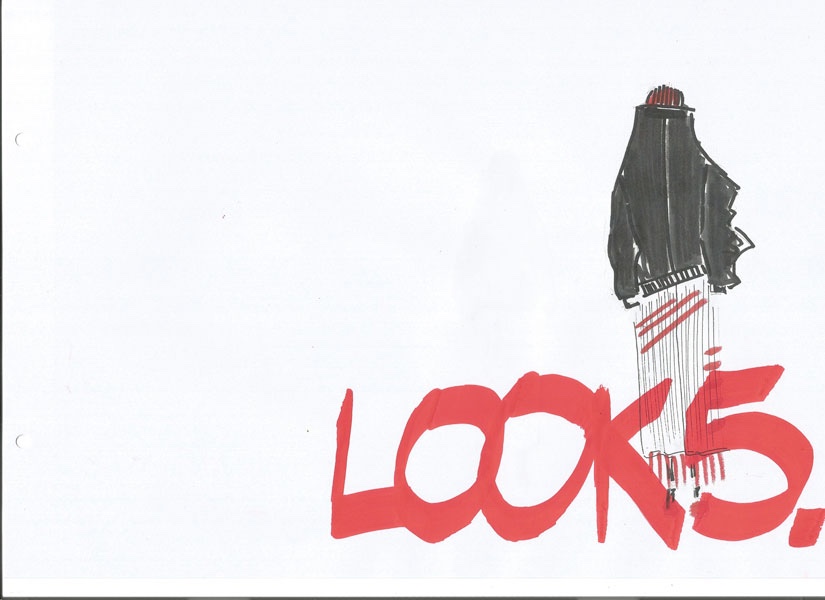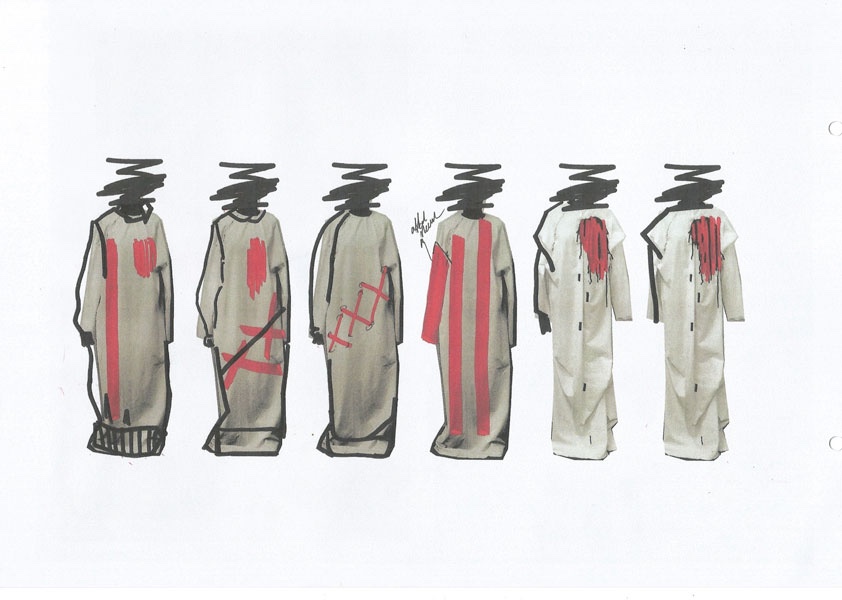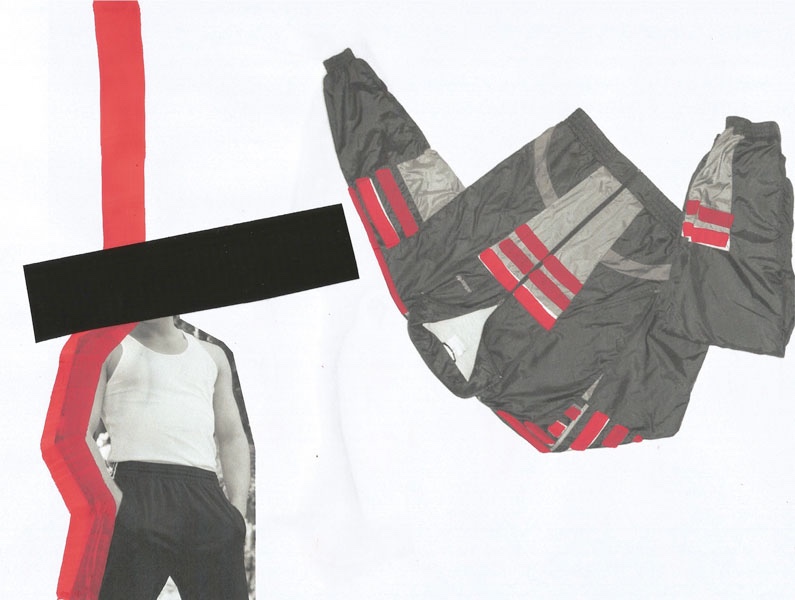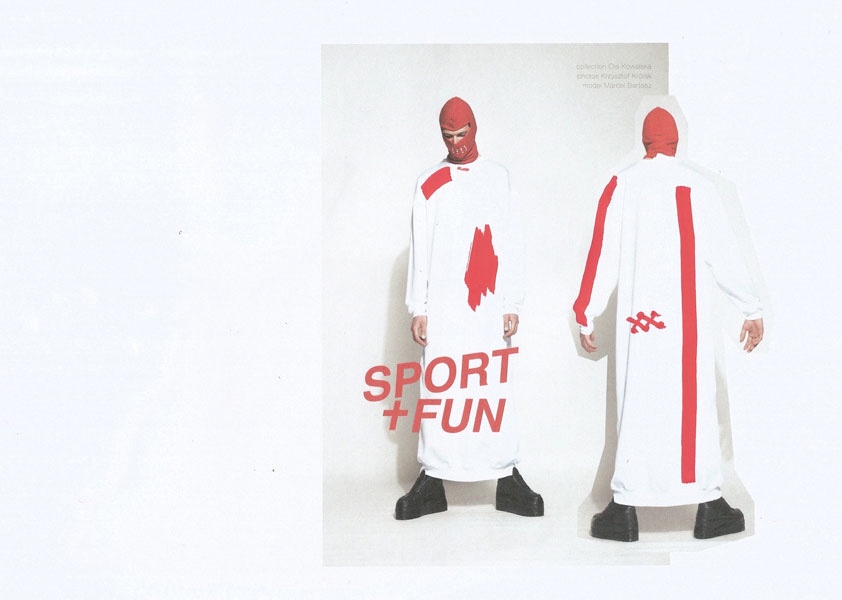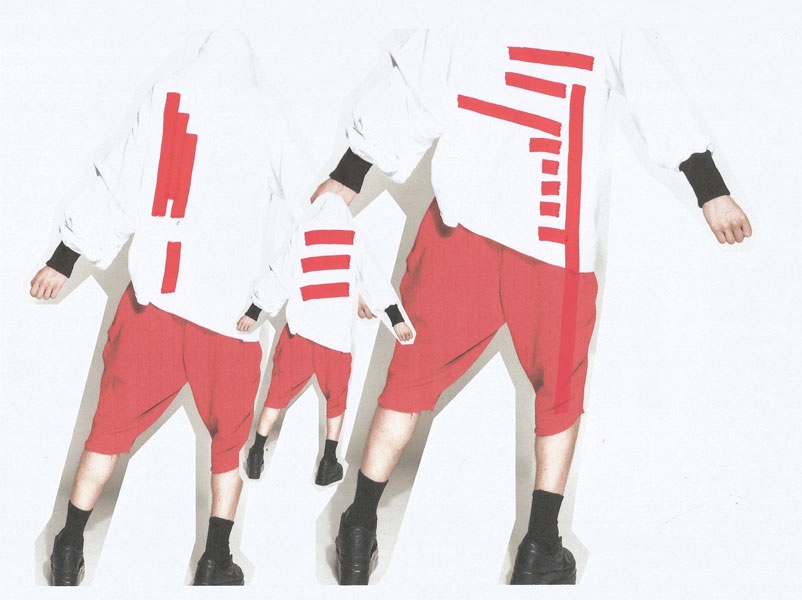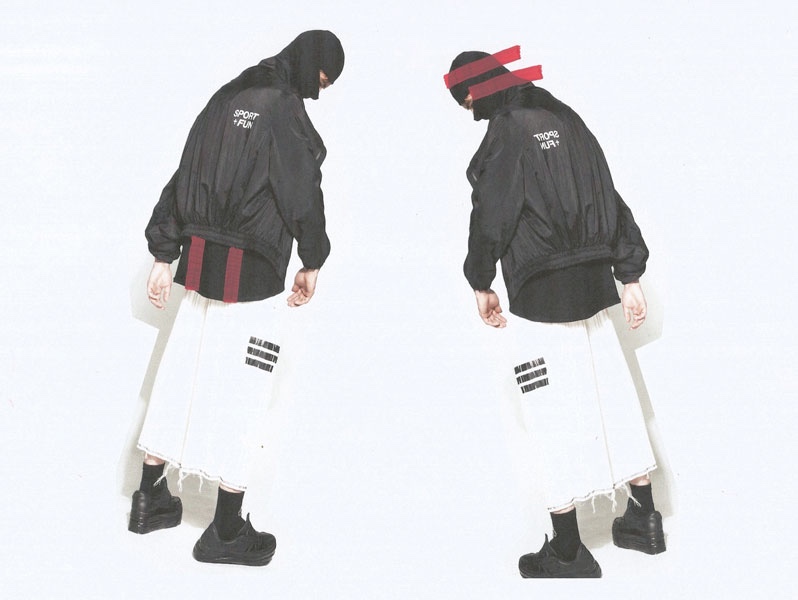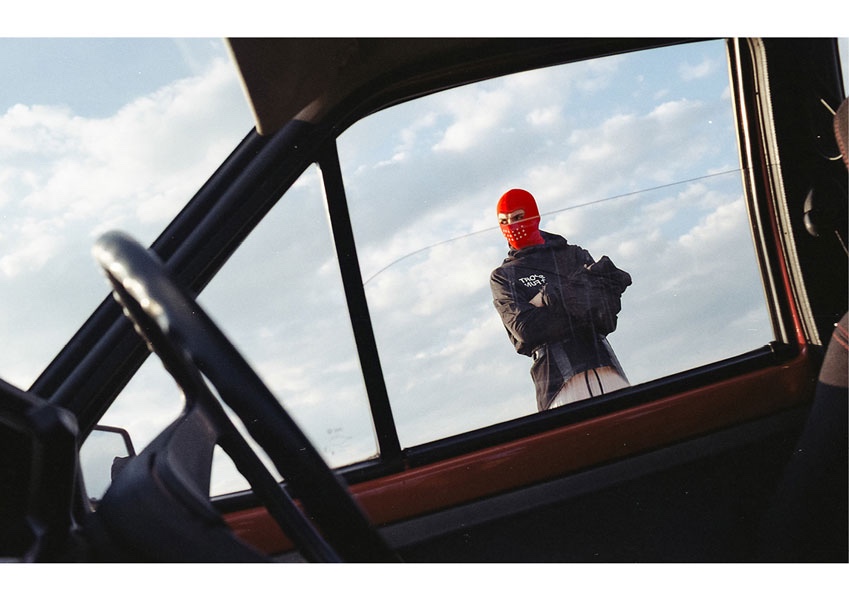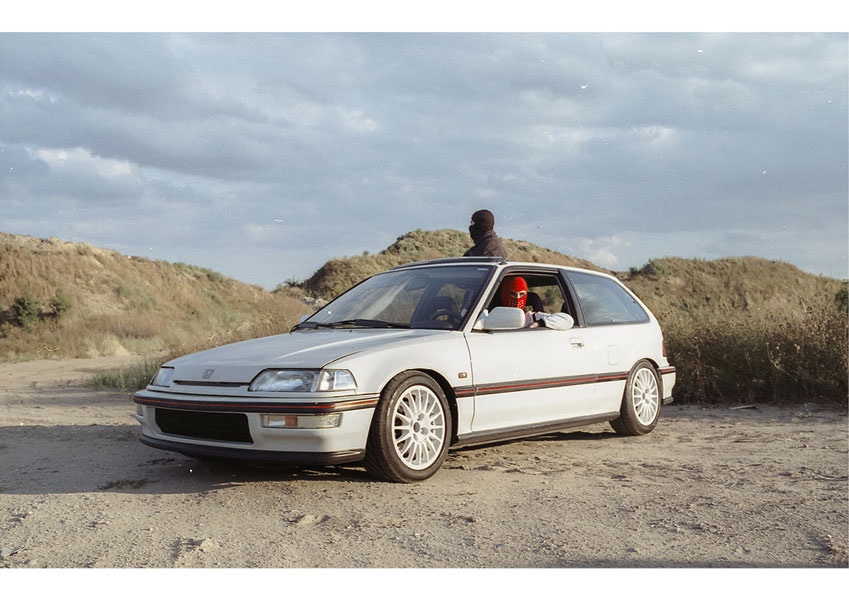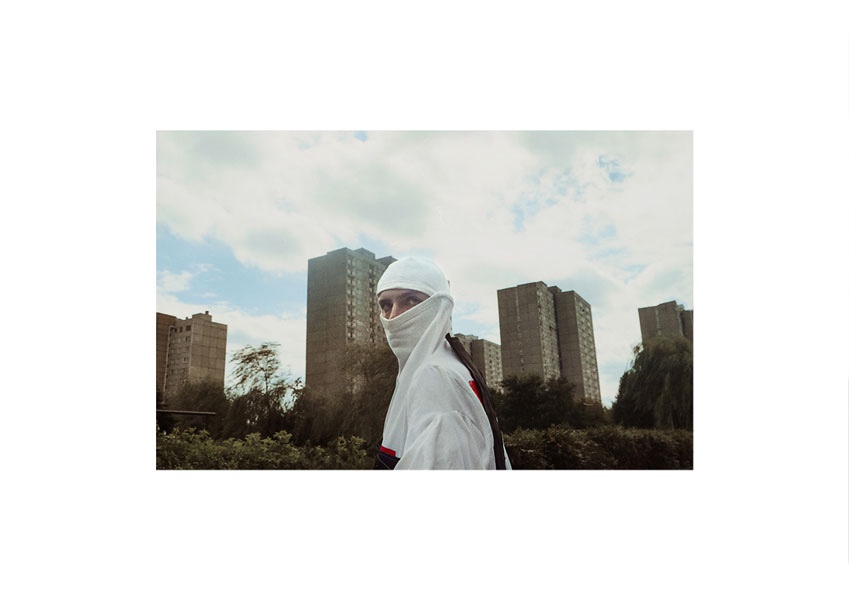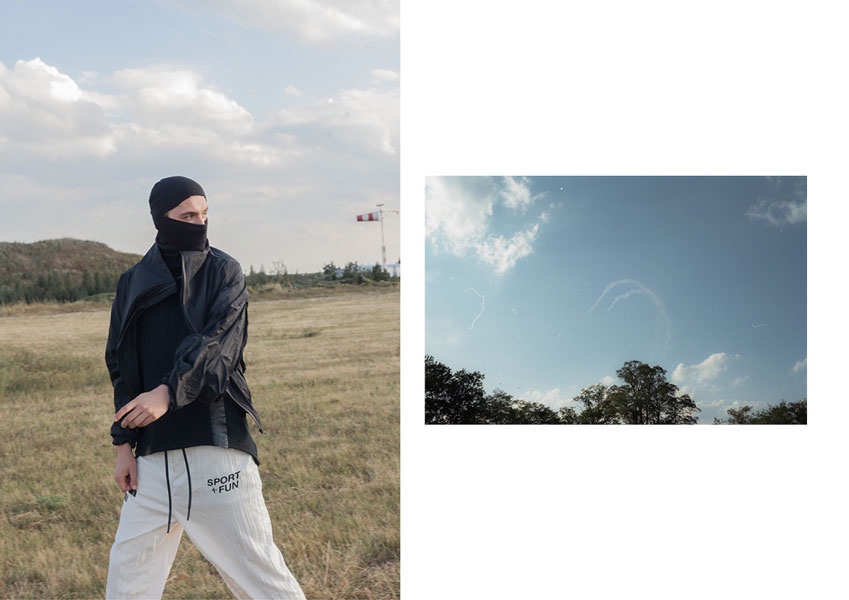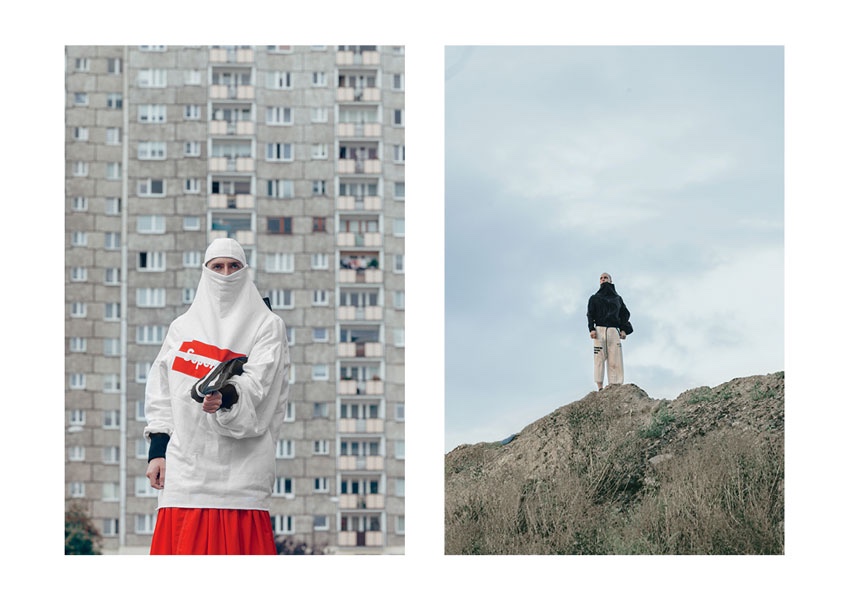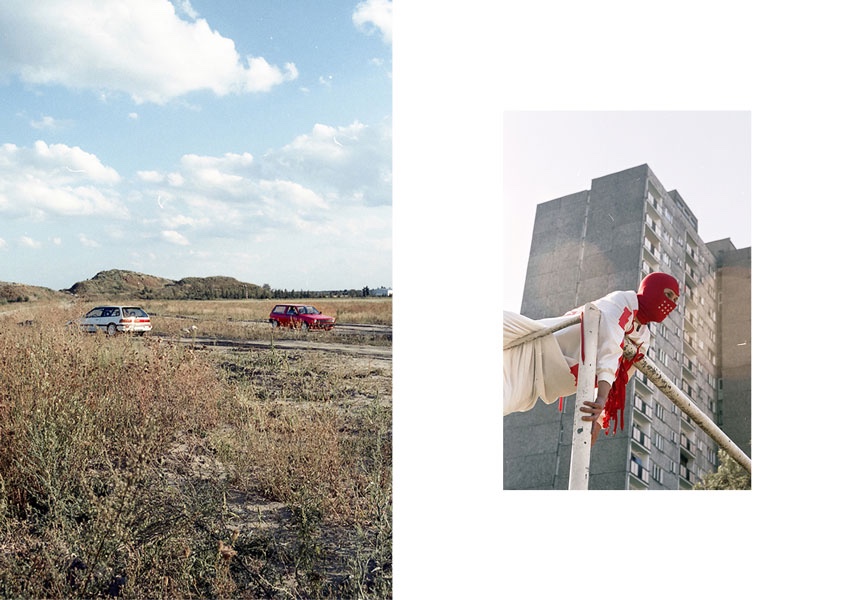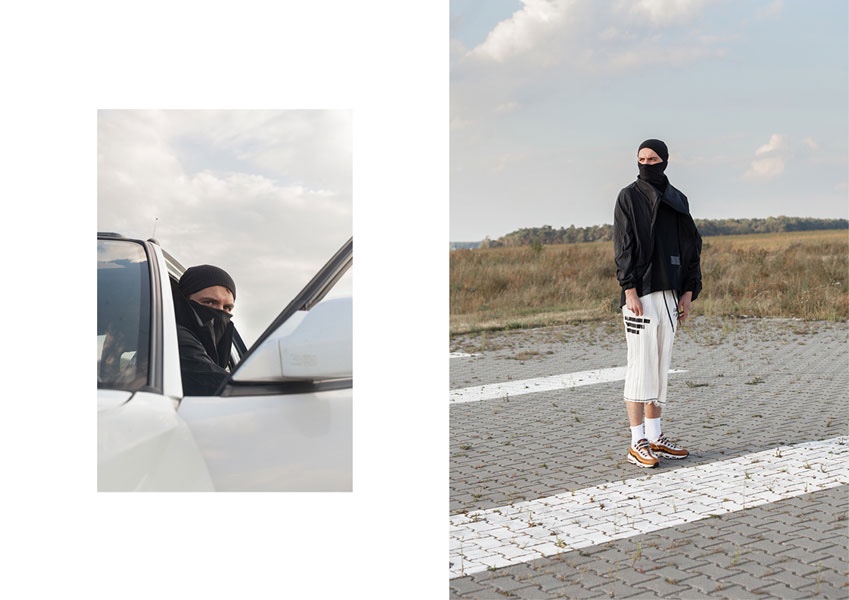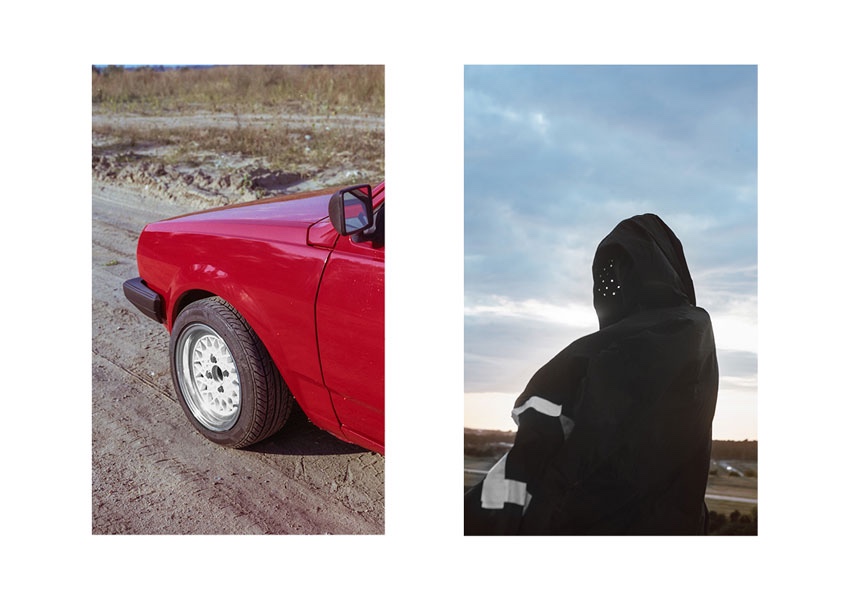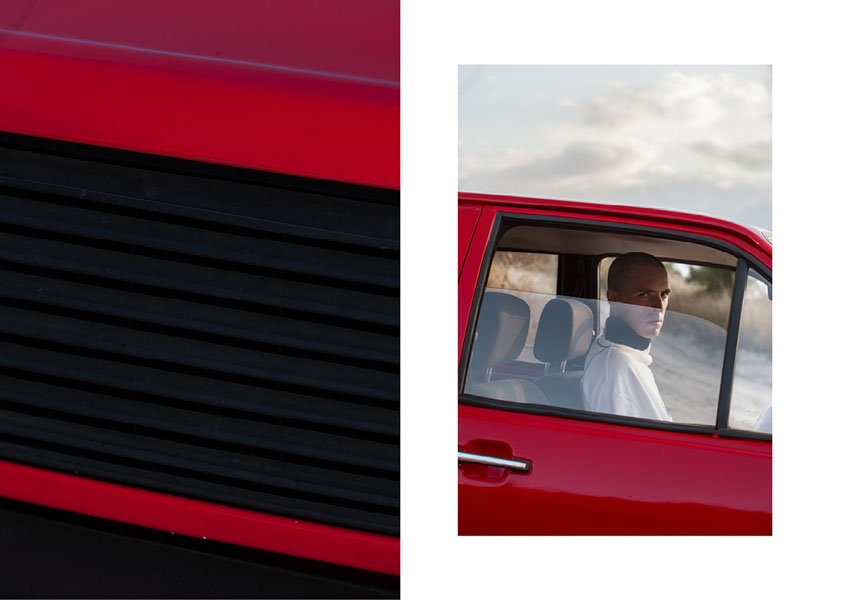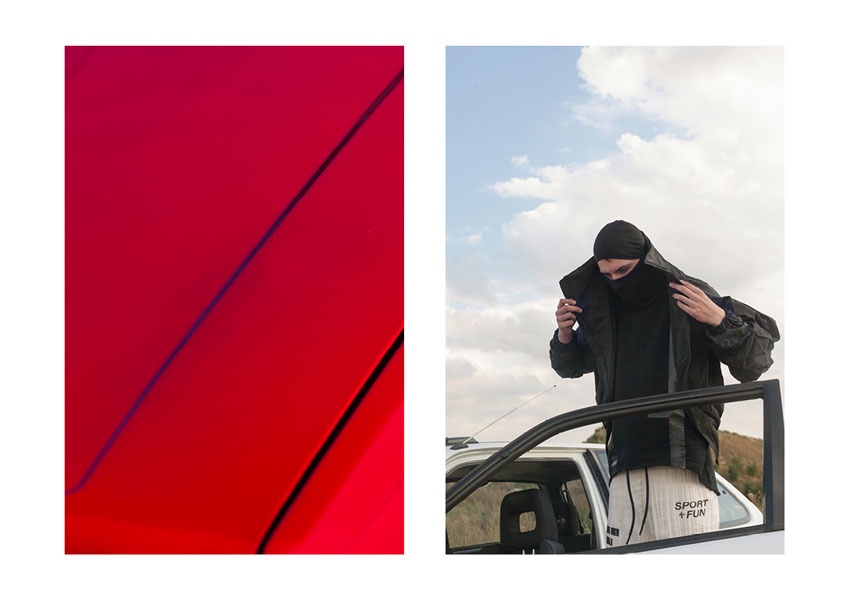One of the chosen ones to show at the Diploma Selection at Designblok Prague 2015, Polish Ola Kowalska surprised with an aggressive catwalk performance pumped up by the nervous song ‘Drop That Bitch’ by CYGN. No wonder a large part of the audience understood it in relations to the current anti-peace vibe flowing across Europe in regards to the unresolved refugees situation. Yet, the concept for her six-piece graduate collection grew at an earlier stage, when resistance was not equated with immigration issues. It wasn’t the votes that were coming up in Poland the next day and were bound to be a slide to the right wing (and did so, as we know now) either. Rather it was the idea of protest that drove her. In her research book I see pictures from the movie La Haine by Mathieu Kassovitz, studies of balaclavas and reduced colour schemes. Ola graduated in 2014 from the School of Form Poznań, the relatively new institution mentored by trendscout mama Lidewij Edelkoort. Although Ola aimed to make a unisex collection it was shown on male models only. Why is that?
It looks better on the catwalk. I focus on street wear and try to show how it changes on its way from subculture dress to mass product. It’s my goal to find a new solution or cycle of street wear, and my idea was to personalise it. When I started drawing I covered all faces, and therefore had to find a way to translate those images into fashion. I wanted to hide identities, as if my models were performing some illegal activities like vandalism or graffitis, as for me this connects it to urbanism, a multi-cultural city. So here the balaclavas and hoodies came into place. Colour-wise I wanted to stay simple with black and white and the one ‘shocking’ colour; red, in order not to overload this collection featuring a lot of details.
One of your six pieces, a jacket, had ‘SPORT AND FUN’ written on it, yet that did not reflect the feeling I got from your collection. What you presented was far away from sport and fun. Can you elaborate on this?
‘I focused on cheap, fake items of sport brands in my research that have funny names such as ‘adibas’ or ‘adihash’; naive, simple and primitive and those aspects I wanted to include to contrast with the main feel of the collection. I mean, what is ‘sport and fun’ if not stupid? It should look like a printed sport logo, as street wear is based on sport and worker wear. The materials I used are: folded cotton, thick knitted cotton, nylon/polyamide, cotton used in worker wear and CODURA/ polyester used in worker wear, so quite heavy and strong textiles. I appreciated that we had project connected to real business, finding answers to real problems, such as the ‘white T-shirt’ project, for which we were interning and working on a resort collection for PAINC. At the school they connect the humanistic and design sciences, so we had a lot of psychology and anthropology to be connected with our projects and to be included in our research. the one thing I missed in my eduction is English.
Who’s style inspires you most and whom do you see as your target audience?
John Galliano, J.W. Anderson, Supreme as street wear brand. My own style is messy; I don’t want to look like somebody else. My target audience are young, living in a big city and part of the city culture. Skaters, rappers.. but there isn’t one subculture I’d like to design for, as they’re all mixed now.
What can we expect to hear from you in future?
‘I hope to have my street wear brand in a few years, for that I now am gaining a lot of experience designing for the Polish brand AMSI, but it’s not reflecting my aesthetic. I might also take a master’s degree, but my dream is my own unisex street wear brand creating a tribe. Hopefully in about five year’s time I will have my new collection ready, for which I see the biggest market in Western Europe, America and Japan. It will be items with the essence from my graduate collection but in more civilised forms, because as such you for example can’t wash it. But it will not be sportswear, just street wear based on sports.It should be well-finished but not highly priced. I’d like to be able to sell a jumper for around 50 Euros. but the pricing should not be too cheap, it has to be desirable.’
Look Book Credits
Photography: Tatiana Pancewicz, Karol Wysmyk
Models: Jan Kęszycki, Wojciech Grynko, Marcin Wasilewski
Clothing: Ola Kowalska
